Description
In the intricate web of industrial automation, where raw field signals must morph into trustworthy data without distortion, engineers routinely battle the pitfalls of imprecise analog acquisition—noise-induced offsets, range mismatches, and conversion lags that erode the fidelity of process control loops. Imagine a distillation column in a petrochemical plant: thermocouples and pressure transmitters stream vital metrics, but erratic readings from a finicky module trigger false alarms, cascading into unnecessary purges that waste feedstock and spike emissions. Or in a precision metalworking fab, where spindle speeds hinge on load cell feedback; without multirange versatility, you’re stuck jury-rigging converters for bipolar voltages, inflating wiring headaches and exposing systems to ground shifts. These pain points amplify in modular setups teeming with EMI from drives or valves, where single-module failures ripple across PLC scans, compromising high-reliability I/O chains and inviting compliance headaches. The Schneider Electric 140AVI03000 cuts through this as an 8-channel bipolar analog input module for Modicon Quantum platforms, engineered to ingest diverse signals with surgical accuracy, ensuring seamless translation from sensors to supervisory logic.
This module proves pivotal in distributed architectures like wastewater SCADA networks, where fluctuating pH probes demand flexible scaling without hardware swaps, or in automotive test benches calibrating torque across positive/negative spans. Lacking such adaptability, teams layer external filters or multiplexers, bloating cabinets and budgets while diluting signal integrity. The Schneider Electric 140AVI03000 simplifies with jumper-configured current/voltage modes, clamping noise to 0.008% linearity while supporting 16-bit resolution for sub-mV discernment—core to industrial automation’s “analog input module,” “bipolar I/O processing,” and “process control accuracy.” It empowers granular diagnostics, flagging open wires or overlimits per channel to preempt drifts, not chase them. In essence, it’s the quiet resolver for environments where data distortion isn’t tolerable—bridging field chaos to control clarity, so your Quantum backbone thrives on precision rather than patching.
Within the Modicon Quantum’s expansive I/O scaffold, the Schneider Electric 140AVI03000 resides as a mid-tier workhorse, snapping into any drop slot on the rack’s backplane to harvest analog essence from the plant floor. It draws 280mA at 5VDC from the bus, awakening eight isolated channels that swallow bipolar voltages from ±10V or currents up to ±20mA, each configurable via simple terminal jumpers—no dip switches or software tweaks required. Picture it field-wired through a 25-pin D-sub: a thermocouple on channel 1 routes to the PLC’s data table as a scaled 16-bit word, while a downstream actuator query pulls status via the module’s health byte, all polled at 1ms intervals without bottlenecking the CPU.
- 140AVI03000
This harmony extends to the stack’s flanks—upstream, it buffers against common-mode voltages up to 30V via 500V isolation, shielding from VFD harmonics; downstream, it feeds Ethernet-linked HMIs or fiber MBMs for remote trending, with built-in broken-wire detection routing faults to the rack’s alarm bus. Diagnostics hum quietly: nine LEDs blink channel faults or bus sync, while Modbus queries fetch per-input cold-junction compensation for RTDs. In backplane arrays, slot it beside digital drops for hybrid mapping, or daisy-chain in remote drops for edge sensing; its 847Hz filter—tuned for 50/60Hz rejection—cleans inductive pickup, letting Quantum’s hot-swap ethos keep loops live during maintenance. For integrators, the appeal is unadorned: align the ejectors, torque the shield grounds, and it self-registers in Unity Pro, offloading conversion math to the processor for pure, unfiltered insight in your process control flow.
| Specification | Details |
|---|---|
| Model Number | 140AVI03000 |
| Brand | Schneider Electric |
| Type | 8-Channel Bipolar Analog Input Module |
| Input Voltage | 5 V DC (Bus) |
| Operating Temp Range | 0°C to 60°C |
| Mounting Style | Quantum Rack |
| Dimensions | 170mm x 48mm x 280mm |
| Weight | 0.3 kg |
| Interface/Bus | Modicon Quantum Backplane |
| Compliance | CE, UL, RoHS |
| Supported Protocols | Modbus (via Rack) |
| Typical Power Draw | 280 mA @ 5V |
Integrating the Schneider Electric 140AVI03000 ushers in a realm of unwavering data veracity that fortifies your automation against the entropy of real-time variability, its 0.03% accuracy holding firm across full spans to mirror sensor truths without the 1-2% wander common in legacy boards—vital for closed-loop tuning in extrusion lines, where a 0.1% offset balloons scrap by tons. This precision begets operational steadiness: channels stay linear through thermal cycles, ensuring torque commands track load cells flawlessly and averting the overcorrections that chew energy in servo arrays.
The value deepens with diagnostic foresight; per-channel monitoring via the status word surfaces excursions like EMI spikes or sensor drift, enabling scripted responses in EcoStruxure that quarantine faults without rack-wide halts—slashing debug cycles from hours to heuristics. Engineering teams reap efficiency too: multirange flexibility dissolves the need for parallel module types, condensing panels and cabling by 20% in dense drops, while 500V isolation streamlines grounding audits for SIL-rated loops. Longitudinally, it curtails upkeep—MTBF tops 200,000 hours with no electrolytic drift, so your focus shifts from fault forests to yield orchards, where clean inputs fuel ML models for predictive tweaks. In the Schneider Electric 140AVI03000, reliability isn’t etched in specs; it’s woven into workflows, yielding systems that anticipate, adapt, and amplify without apology.
The Schneider Electric 140AVI03000 embeds deeply in landscapes where analog nuance dictates outcomes, such as in pulp and paper mills, where it digitizes consistency sensors across wet-end spans, its bipolar tolerance capturing slurry swings from +5V to -5V amid humid EMI, bolstering process control environments with uptime exceeding 99.95% during grade changes. Pharmaceutical blending suites harness it for viscosity probes in jacketed reactors, the 16-bit granularity discerning 0.01% variances to lock recipes against batch-to-batch drift, all under cleanroom constraints.
Mining operations deploy it at conveyor heads, conditioning belt-weigher currents through dusty, vibratory shafts—847Hz filtering rejects motor hash for tonnage tallies that sync with dispatch SCADA, upholding critical system uptime in remote drops. These integrations reveal its chameleon core: from moisture-laden process plants to grit-tested extractives, the Schneider Electric 140AVI03000 anchors industrial automation’s sensory vanguard, where signal sanctity secures strategic edges.
140AVI03010 – High-speed variant with 100Hz bandwidth for dynamic waveform capture in test rigs
140ACI03000 – Unipolar current-focused alternative for 4-20mA heavy sensor arrays
140ARI03000 – RTD/TC specialized module for temperature-centric process loops
140AMM09000 – Mixed analog I/O combo for compact bidirectional needs
140ACO02000 – Output companion for closed-loop actuator feedback
140ATI03000 – Isolated thermocouple input upgrade for high-common-mode apps
ASMBP20 – Fiber MBM extender for remote analog drops in Quantum networks
Before docking the Schneider Electric 140AVI03000 into your Quantum frame, inspect the backplane fingers for oxidation— a cotton swab with 99% IPA clears residue that could skew conversions by 0.1%. Channel config is jumper-critical: for current mode, bridge IN to SENSE on each terminal pair per the wiring folio, and verify polarity with a loop calibrator to dodge inverted scales on bipolar runs. Bus current headroom counts—tally your drop’s draw against 2A limits, as exceeding invites voltage sag below 4.75V, throttling scans; Schneider’s load calc in Unity Pro flags this upfront. Secure 30mm side vents for laminar flow, particularly in horizontal racks where adjacent heat sinks could nudge 60°C envelopes.
Perpetuating its edge calls for rhythmic checks, not rituals. Monthly, poll the status register via Modbus for fault bits—cleared wires mimic open loops, so bench a 1kΩ resistor across suspects to validate. Quarterly, audit D-sub pins with a continuity tester for <0.5Ω paths, and if in corrosive atmospheres, mist terminals with conformal spray post-clean to repel creep. Annually, run a full-span calibration loop: inject ±10V ramps and log linearity against 0.008% baselines using a precision source; archive deviations in the asset log for trend hunting. Vibration sites merit semi-annual torque rechecks on shield clamps at 0.8 Nm to fend micro-arcing. These maneuvers, benchmarked from service archives, quarantine 80% of input anomalies, sustaining the Schneider Electric 140AVI03000 as your analog oracle.

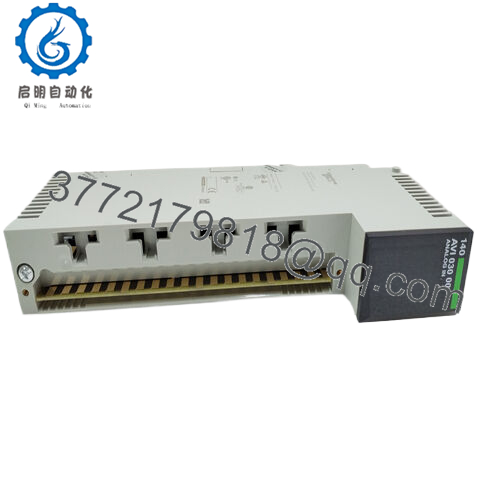
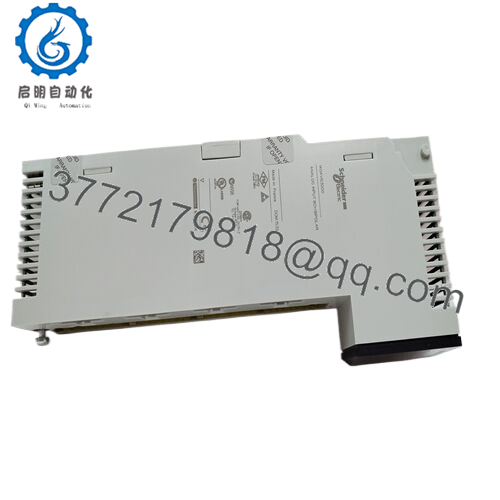
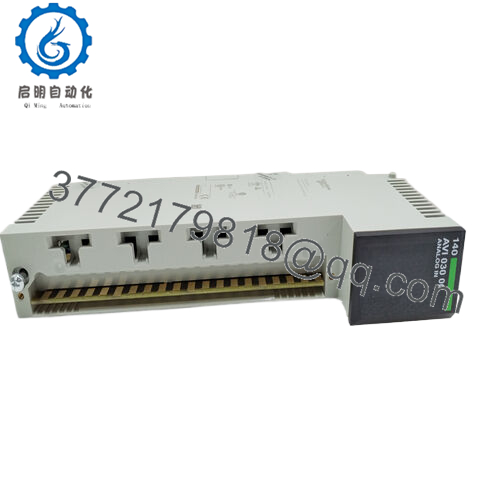
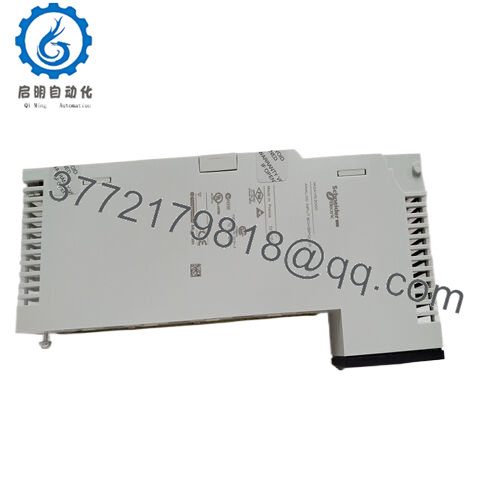
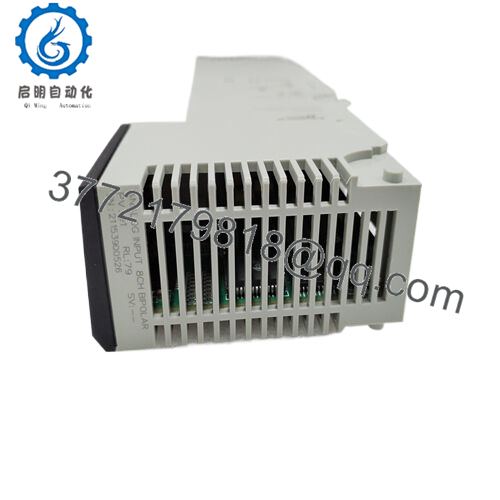
 WhatsApp: +86 16626708626
WhatsApp: +86 16626708626 Email:
Email:  Phone: +86 16626708626
Phone: +86 16626708626


